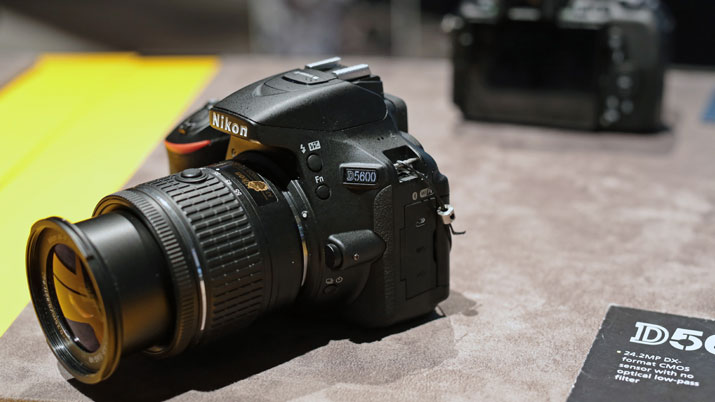Entry-level DSLRs are a fantastically reliable way to capture high-quality images and have remained the go-to choice for photography enthusiasts on a budget. In recent years, mirrorless cameras have been the real headline grabbers, boasting smaller, slimmer designs while entry-level DSLRs remain reliable as ever yet experience little more than incremental updates once a year or two.
This year at CES, the U.S. release announcement for the Nikon D5600 was the only update we saw for entry-level DSLRs, and while it’s an incredibly capable camera, most of its changes are relatively small. Those most noteworthy are its new Snapbridge connection, touchscreen scrubbing and in-camera time lapse creation.
The Snapbridge connection is an always-on low-power connection that the camera uses to automatically sync full-sized JPEGs with your smartphone or tablet. This is a relatively small change since Nikon’s entry-level DSLRs have had Wi-Fi and NFC for a while, but the automatic nature of it all could prove to make a big difference. The more steps we can take out of the process from shooting to sharing, the better.
The D5600 features a swiveling touchscreen display much like the cameras that preceded it. But regardless of the display, browsing through photos after a heavy day of shooting has always been challenging with the relatively basic controls found on an entry-level DSLR. To help alleviate this, the D5600's touchscreen now allows you to scrub through your photos much like you would scrub through a video on your phone, rather than swiping through photos individually.
In-camera time-lapse is a great feature for those looking to create more than just photos with their camera. This mode lets you choose the duration, resolution and framerate of your photo, then the camera automatically takes photos at your predetermined intervals, combining all of the photos into a finished MOV file. It makes getting a DSLR-quality time-lapse easier than ever before.
Aside from its stand-out features, there are many specs from the D5500 that carry over into the new version. The D5600 retains the same EXPEED 4 image processor, 5 fps continuous shooting and 39-point autofocus system as its predecessor. It also has essentially the same sensor.
The D5600 will ship with a 24.2-megapixel CMOS sensor. Like the sensor found in the D5500, it lacks an anti-aliasing filter. This can increase the instances of moiré, a strange effect caused by extremely fine or complicated patterns, but it makes for sharper, clearer images on the whole and is generally seen as a positive move.
Overall, we were impressed by the D5600 during our brief encounter with it at CES. However, with a retail price of $799.95, it’s definitely on the expensive end for an entry-level DSLR, but not unexpectedly so considering its robust feature set. For those looking for the same great image quality at a lower price, check out our list of the best cameras.

